Name Agnes Krusenstjerna Role Writer | Movies Loving Couples Ex-spouse David Sprengel | |
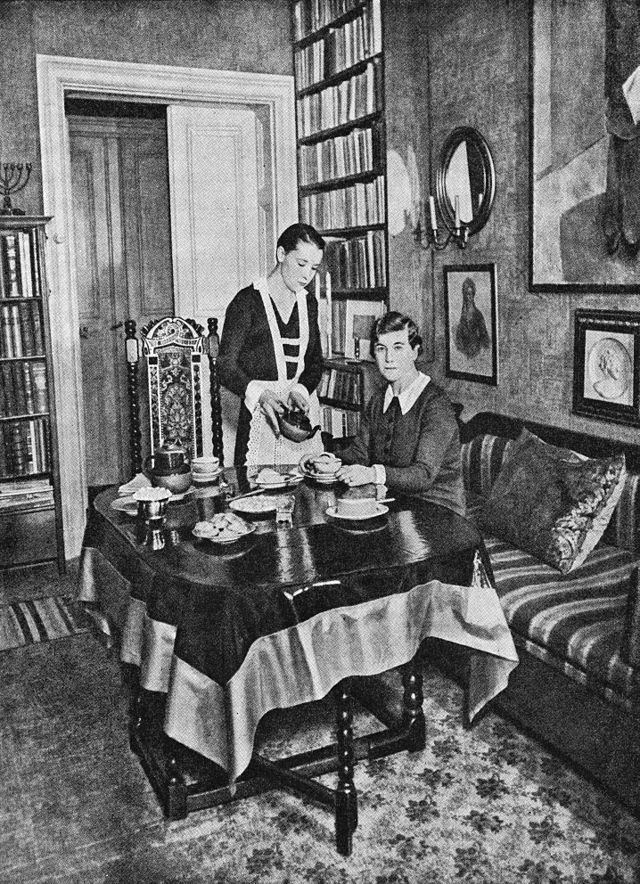 | ||
Books Tony växer upp, Tonys laroar, Tonys sista laroar Similar People Mai Zetterling, Sigrid Hjerten, Paul Davies | ||
Agnes von Krusenstjerna (October 9, 1894 – March 10, 1940) was a Swedish writer and noble. She was a controversial writer whose books challenged the moral standards of the day and was the center of a great literary controversy of the freedom of speech.
Contents
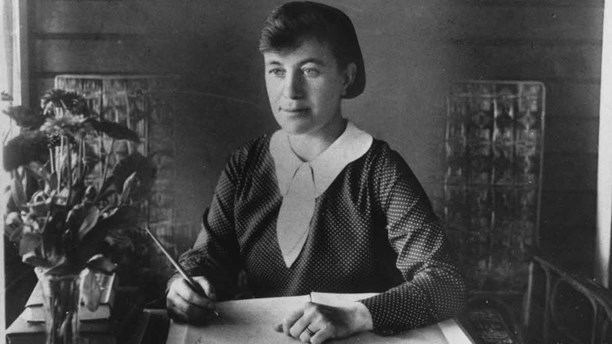
Biography
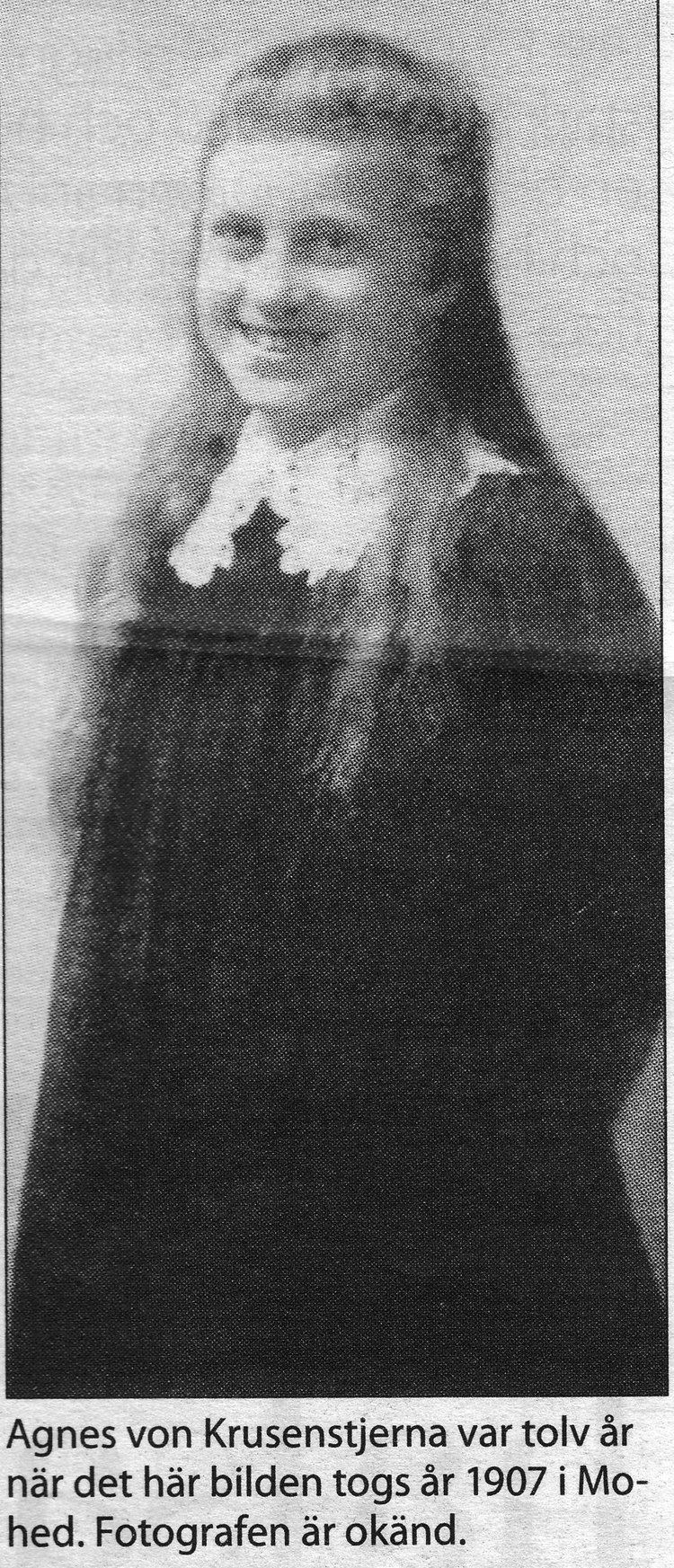
Krusenstjerna was born in Växjö and brought up in Gävle. Niece of Edvard von Krusenstjerna, she was born in to the nobility. She was educated at the teacher's academy of Anna Sandström in Stockholm. She married David Sprengel in 1921.
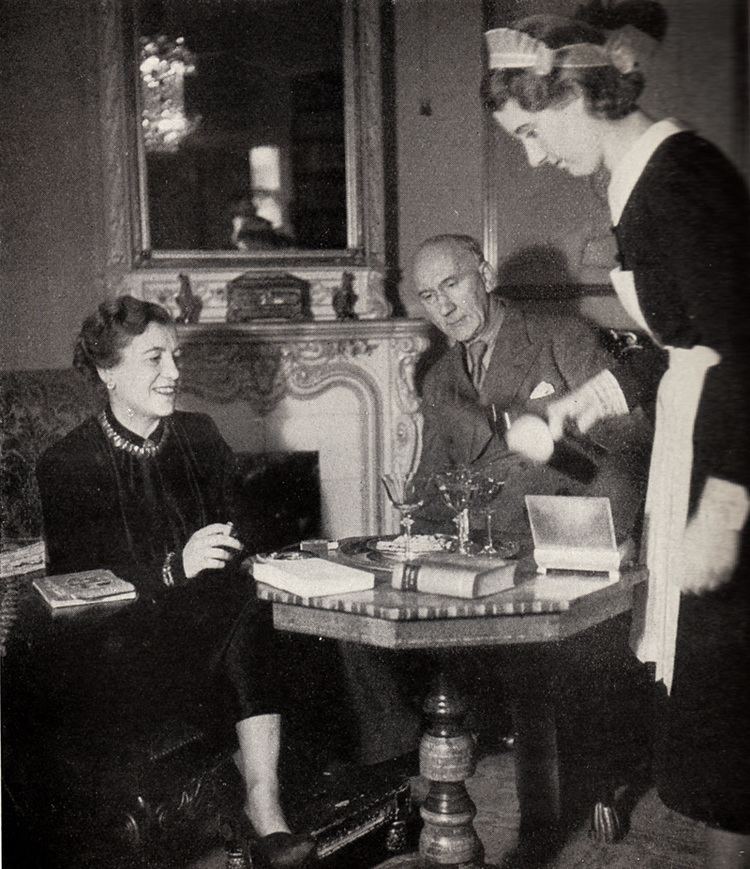
Agnes von Krusenstjerna was on several occasions admitted to mental hospitals. In 1940, she was diagnosed with a brain tumour; she died on the operating table in March 1940. Krusenstjerna died in Stockholm.
Works
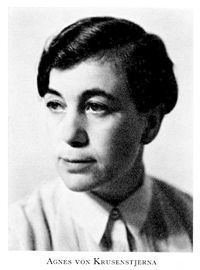
She debuted as a writer with the girls' novel Ninas dagbok (1917) and made her breakthrough with the Tony novel series (1922–26) about a girl's development in a noble environment.

The Tony series was greatly controversial, as it depicted sexual themes as well as mental disorders, which made Krusenstjerna controversial. Sexuality was, before the 1920s, not mentioned in novels, and her books depicted sex and intercourse. The novel series Fröknarna von Pahlen created one of the greatest debates and controversies of its time in Sweden, known as Krusenstjernafejden (The Krusenstjerna feud): the series described sexual intercourse, which caused an enormous amount of attention and led to a two-year-long (1933–35) debate about the freedom of speech, the relation of literature toward the moral standards, the right of female expression and the right to sexual freedom, which ended with the writers' conference of Sigtuna 1935. She was supported by Eyvind Johnson, Johannes Edfelt, Elmer Diktonius and Karin Boye, who compared the affair to the censorship of Nazi Germany.
Her writing was closely inspired to her own life and can be regarded as partially autobiographical, especially her last, unfinished series, Fattigadel (Poor Nobility) (1935–1938).
Works
Novels
Series
The Tony series:
- Tony växer upp (Tony's adolescence) 1922
- Tonys läroår (Tony's years of learning) 1924
- Tonys sista läroår (Tony's last years of learning) 1926
The Miss von Pahlen's series: Fröknarna von Pahlen:
- Den blå rullgardinen (The blue curtain) 1930
- Kvinnogatan (The Women's street) 1930
- Höstens skuggor (The shadows of the autumn) 1931
- Porten vid Johannes (The gate at Johannes) 1933
- Älskande par (Loving couples) 1933
- Bröllop på Ekered (Wedding at Ekered) 1935
- Av samma blod (By the same blood) 1935
Fattigadel (Poor nobility) (original title: Viveca von Lagercronas historia (The story of Viveca von Lagercrona):
- Fattigadel (Pauper nobility) 1935
- Dunklet mellan träden (The shadow between the trees) 1936
- Dessa lyckliga år (These happy years) 1937
- I livets vår (In the spring of life) 1938
Poems
Short stories
Fiction
Her life was portrayed in Amorosa (1986 film).
